![]() presents a 1200 mm long led-FL tube that uses a lot of small leds. The tube is highly efficient. This led-FL tube can be used in an ordinary luminaire where the starter has to be removed; and the ballast may remain. As it is likely that this tube will be used as replacer for existent fluorescent tubes, the measurements are done with the ballast still in the circuit. This article shows diverse lamp parameters, also gathered together in an Eulumdat file.
presents a 1200 mm long led-FL tube that uses a lot of small leds. The tube is highly efficient. This led-FL tube can be used in an ordinary luminaire where the starter has to be removed; and the ballast may remain. As it is likely that this tube will be used as replacer for existent fluorescent tubes, the measurements are done with the ballast still in the circuit. This article shows diverse lamp parameters, also gathered together in an Eulumdat file.
See this overview for a comparison with other light bulbs.
Summary measurement data
| parameter | meas. result | remark |
|---|---|---|
| Color temperature | 5939 K | Bright white |
| Luminous intensity Iv | 617 Cd | Additionally a measurement has been taken at 232 cm distance. See the article. |
| Beam angle | 121 deg | |
| Power P | 23.1 W | The powermeasurement done with and without ballast did not change this power consumption value. |
| Power Factor | 1.0 | For every 1 kWh net power consumed, there has been 0.0 kVAhr for reactive power. |
| Luminous flux | 1954 lm | |
| Luminous efficacy | 84 lm/W | |
| CRI_Ra | 63 | Color Rendering Index. |
| Coordinates chromaticity diagram | x=0.3225 and y=0.3461 | |
| Fitting | FL-tube | |
| D x H external dimensions | 32 x 1210 mm | External dimensions of the luminaire. |
| D x H luminous area | 24 x 1150 mm | Dimensions of the luminous area (used in Eulumdat file). This is equal to the size of the area inside the tube on which the leds are mounted. |
| General remarks | The ambient temperature during the whole set of measurements was 24.5-27.5 deg C.
Warm up effect: little effect during the warm up time on the illuminance and power consumption (< 4 %). Voltage dependency: the illuminance and power consumption are dependent on the voltage. The dependency is linear. The Eulumdat file can be found via this link. A couple of additional photos can be found here. |
|
| Measurement report (PDF) |
Eulumdat light diagram
An interesting graph is the light diagram, indicating the intensity in the C0-C180 and the C90-C270 plane. This light diagram below comes from the program Qlumedit, that extracts these diagrams from an Eulumdat file.
The light diagram giving the radiation pattern.
It indicates the luminous intensity around the light bulb. The C0-C180 plane is perpendicular to the length of the tube. The C90-C270 plane is along the length of the tube.
There is little difference in the radiation patterns looking at the different planes.
The unit is Cd/1000lm, meaning the intensity in Cd assuming there would be 1000 lumen in the measured light bulb. This enables comparing different types of light bulbs.
Illuminance Ev at 1 m distance, or luminous intensity Iv
Herewith the plot of the averaged luminous intensity Iv as a function of the inclination angle with the light bulb.
The radiation pattern of the light bulb.
This radiation pattern is not the same as the one given earlier. This is because of the (small) differences of beam angles in the different planes. In this graph the luminous intensity is given in Cd.
These averaged values are used (later) to compute the lumen output.
Illuminance at a distance of 232 cm directly underneath the tube
The bus was switched on and during an hour the illuminance was measured. The average result was 113 lux, with an ambient temperature of 26 deg C.
Intensity data of every measured turn angle at each inclination angle.
This plot shows per inclination angle the intensity measurement results for each turn angle at that inclination angle. At higher inclination values there’ s a little more spread in the illuminance values.
When using the average values per inclination angle, the beam angle can be computed, being 121 degrees.
Luminous flux
With the averaged illuminance data at 1 m distance, taken from the graph showing the averaged radiation pattern, it is possible to compute the luminous flux.
The result of this computation for this light spot is a luminous flux of 1954 lm.
Luminous efficacy
The luminous flux being 1954 lm, and the power of the lightbulb being 23.1 W, yields a luminous efficacy of 84 lm/W.
A power factor of 1.0 means that for every 1 kWh net power consumed, a reactive component of 0.0 kVAr was needed.
| Light bulb voltage | 230 V |
| Light bulb current | 101 mA |
| Power P | 23.1 W |
| Apparent power S | 23.2 VA |
| Power factor | 1.0 |
Of this light bulb the voltage across ad the resulting current through it are measured and graphed.
Voltage across and current through the lightbulb
Current has the same phase as the voltage, and also has a nice sinusoidal form.
Also the power spectrum of the current is determined.
The powerspectrum of the current through the light bulb.
There are almost no harmonics apparent in the spectrum.
Without ballast
When the tube is operated without ballast (directly connected to the grid) there are a few minor differences. The current looks less like a sinus, but the difference is minor. The power factor is still 1.0.
The form of the current and its spectrum, without ballast.
Color temperature and Spectral power distribution
The spectral power distribution of this light bulb.
The measured color temperature is about 5950 K which is bright white.
This color temperature is measured straight underneath the light bulb. Below a graph showing the color temperature for different inclination angles.
Color temperature as a function of inclination angle.
The color temperature is given for inclination angles up to 75 degrees since at larger inclination angles there is too little illumination.
The value remains constant within 4 %.
Chromaticity diagram
The chromaticity space and the position of the lamp’s color coordinates in it.
The light coming from this lamp is at a distance from the Planckian Locus (the black path in the graph).
Its coordinates are x=0.3225 and y=0.3461.
Color Rendering Index (CRI) or also Ra
Herewith the image showing the CRI as well as how well different colors are represented (rendered). The higher the number, the better the resemblance with the color when a black body radiator would have been used (the sun, or an incandescent lamp).
Each color has an index Rx, and the first 8 indexes (R1 .. R8) are averaged to compute the Ra which is equivalent to the CRI.
CRI of the light of this lightbulb.
The value of 63 is lower than 80 which is considered a minimum value for indoor usage.
Note: the chromaticity difference is 0.004 indicates the distance to the Planckian Locus. Its value is lower than 0.0054, which means that the calculated CRI result is meaningful.
Voltage dependency
The dependency of a number of lamp parameters on the lamp voltage is determined. For this, the lamp voltage has been varied and its effect on the following lamp parameters measured: illuminance E_v [lx], color temperature CT or correlated color temperature CCT [K], the lamppower P [W] and the luminous efficacy [lm/W].
Lamp voltage dependencies of certain light bulb parameters, where the value at 230 V is taken as 100 %.
The consumed power and the illuminance vary when the voltage varies between 200-250 V. This variation is lineair.
When the voltage at 25 varies with + and – 5 V, then the illuminance varies with less than + and – 3 %, which will not be visible when the voltage changes abruptly.
Warm up effects
After switch on of a cold lamp, the effect of heating up of the lamp is measured on illuminance E_v [lx], color temperature CT or correlated color temperature CCT [K], the lamppower P [W] and the luminous efficacy [lm/W].
Effect of warming up on different light bulb parameters. At top the 100 % level is put at begin, and at bottom at the end.
During warm up time of about 30 minutes, the light gives about 3% less light. This is negligible.
Additional photos
Close up on the leds.
The led-TL tube is very efficient (combination of the power source internally and the leds themselves).
The backside of the tube.
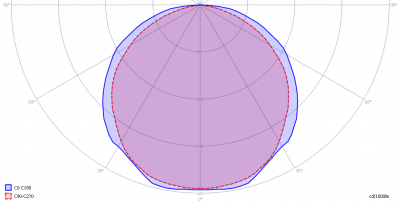
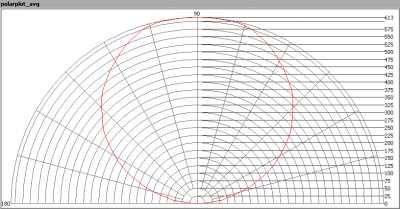
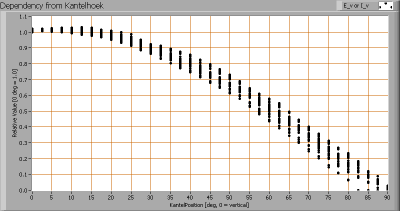
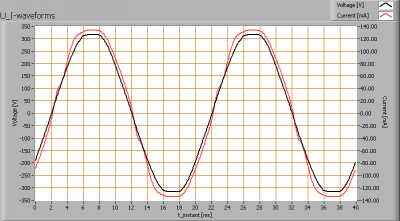
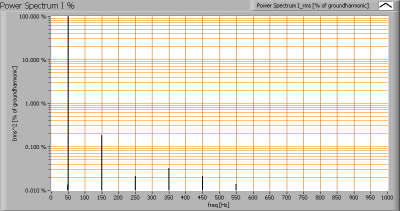


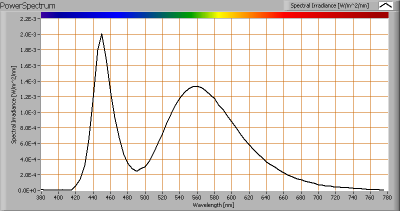
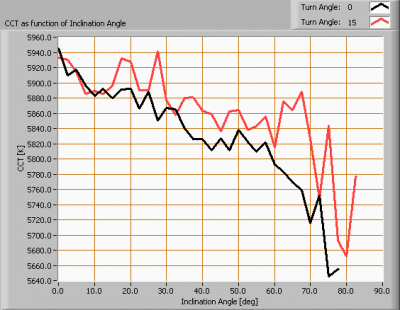
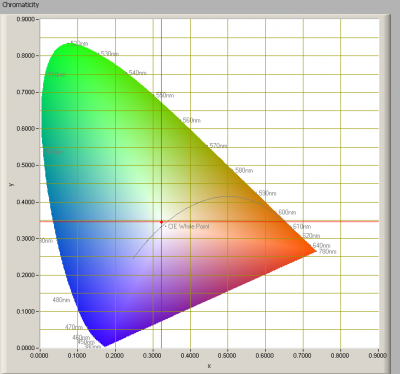
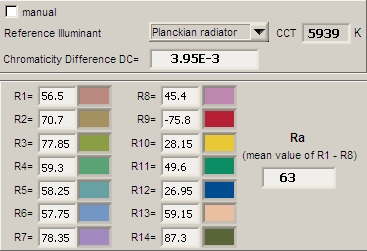
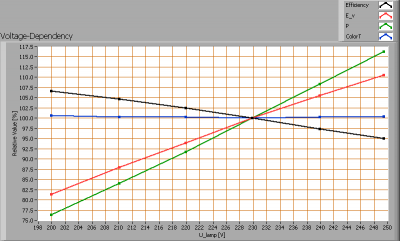
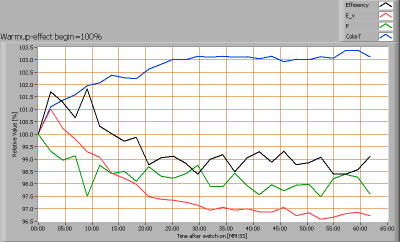
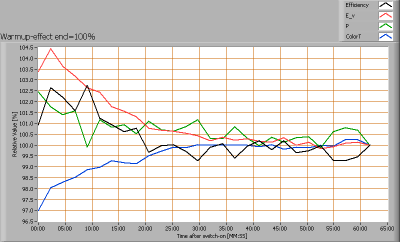
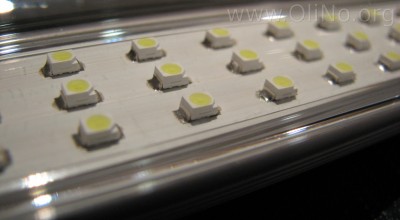
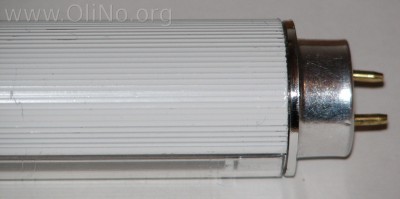



Most popular posts